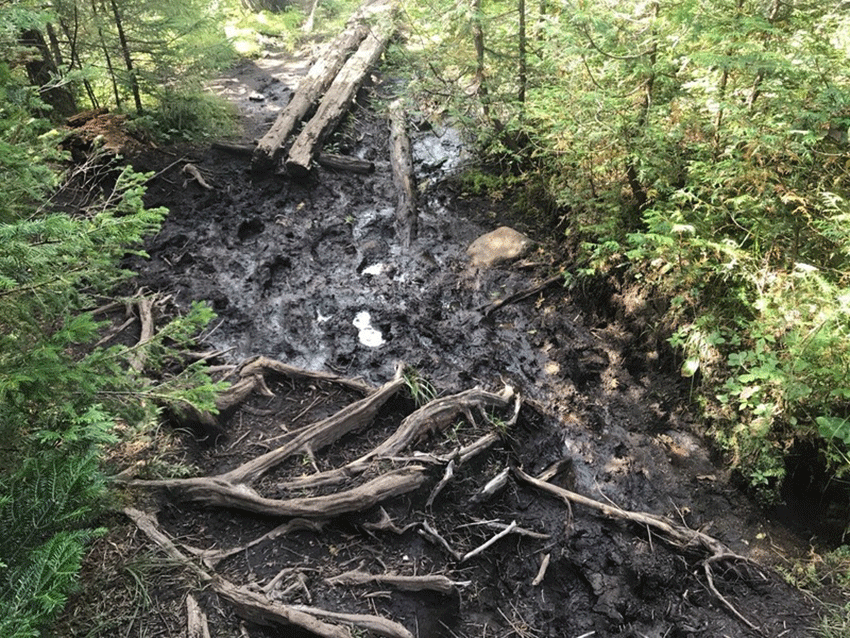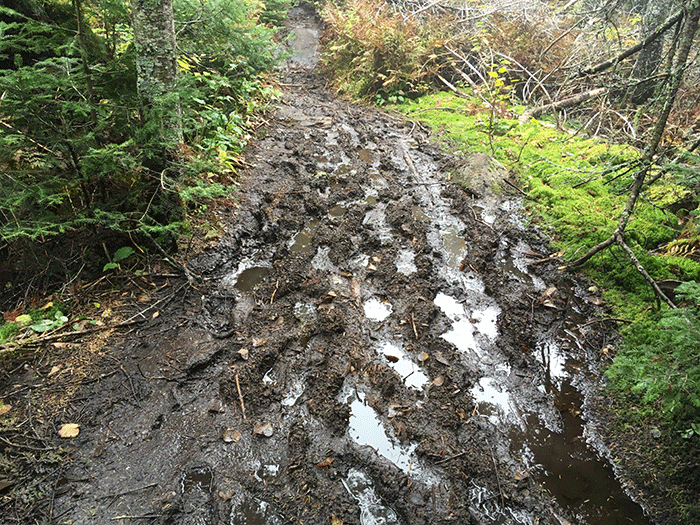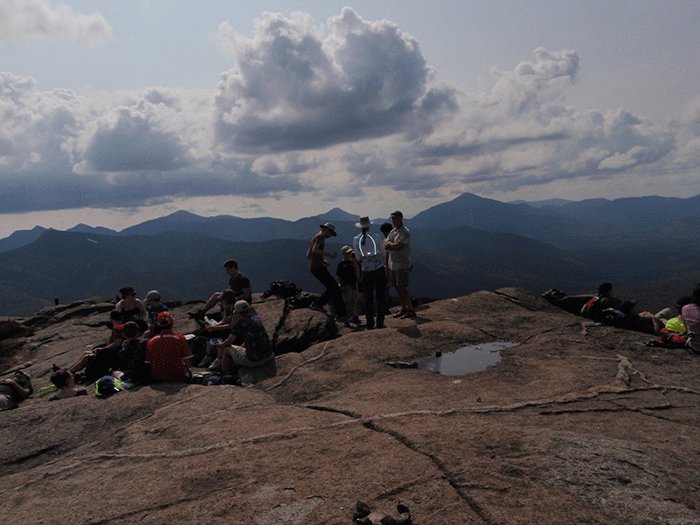Another record-setting weekend over Columbus Day 2019 threatens success of the Adirondacks and wildlands.
Protect the Adirondacks, Adirondack Mountain Club, Adirondack Wild, and Adirondack Council issued this joint statement:
New York is spending hundreds of millions of dollars to promote tourism and build visitor venues in the Adirondack Park while investing far too little to protect the publicly-owned Forest Preserve and its wild land resources from damage due to overuse by record-setting crowds, conservation organizations said today.
The groups are asking the Governor to include in his 2020-21 executive budget:
- targeted investments in growing the DEC’s Forest Ranger and natural resources staff which have remained static since the great recession;
- a state investment of $10 million in preservation and stewardship of Wilderness areas by fully funding, staffing and implementing a comprehensive plan including:
- expanded visitor outreach;
- hiker education;
- front-country infrastructure including trailhead stewards;
- backcountry infrastructure including rebuilt and well-maintained sustainable hiking trails;
- an experimental permit reservation or limited entry system to limit use at some of the most overused, degraded locations, allow natural resources to recover and ensure a better wilderness experience; and,
- carrying capacity studies, including wildland monitoring to assure that desired resource and recreational conditions are met and maintained.
DEC convened a meeting in July with all Adirondack Park stakeholders to discuss all these strategies for managing overuse in the High Peaks Wilderness and issued a summary of the results of that meeting. DEC has yet to announce next steps.
“The 3-million acre forever wild Forest Preserve is one of the greatest accomplishments in the history of New York. Expanding and protecting the Forest Preserve has been a 125-year bipartisan and multi-generational commitment of New Yorkers. The popularity of the Forest Preserve is now at an all-time high. It’s time to make a massive investment in the management of the Forest Preserve to meet the immense challenges from overuse in the Adirondack and Catskill Parks. Governor Cuomo made a huge investment in the State Parks system through the Parks 2020 Program, and now we need to make a similar timely and massive investment in the management of the Forest Preserve in the Adirondack and Catskill Parks to enhance public recreation and stewardship of these magnificent mountains, rivers, forests and lakes,” said Peter Bauer, Executive Director of Protect the Adirondacks.

A degraded trail leading up Algonquin Mountain in the High Peaks Wilderness. The State of New York needs to make a greater investment in hiking trail construction and maintenance.
“The next State budget is being drafted now, so there is no time to waste. We’ve written to DEC Commissioner Seggos to seek a meeting with him to discuss next steps so that the Governor’s executive budget incorporates the needed financial resources to carry out a comprehensive stewardship strategy. We hope to hear back from him soon. Stewardship of the High Peaks Wilderness and other wildlands should be a very high priority for this year’s State budget,” said Adirondack Wild: Friends of the Forest Preserve’s David Gibson.

A degraded, poorly designed, and poorly maintained trail in leading to Mount Colvin in the eastern High Peaks Wilderness area. Degraded trails are unacceptable for public use.
“The park now hosts more than 12 million annual visitors and too many sensitive areas of the Forest Preserve are being loved to death,” said William C. Janeway, Executive Director of the Adirondack Council. “It’s great to see so many enjoying the Adirondacks but conditions due to demand and overuse in both front and backcountry of the wilderness are deteriorating quickly. We’re placing band aids on a gaping wound. Trail maintenance, backcountry patrols, public education and enforcement cannot keep up. Backcountry search and rescue operations have grown exponentially for the small Ranger force. Once-pristine waters flowing from the summit of Mount Marcy now test positive for E. Coli, and the presence of human waste.”
“The state needs more staff to manage the landscape and manage the crowds visiting it,” said Neil Woodworth, Executive Director of the Adirondack Mountain Club. “Rangers are handling and average of about 30 rescues a month. The state needs more conservation officers, planners, biologists, engineers and trails crews.
The organizations noted that the current State Budget committed $180 million to new winter sports facilities for the Olympic Regional Development Authority, $16 million for a Northway visitors’ center and $20 million for an equestrian campground and day use area. That’s all good and will attract new visitors, they said, but we need a matching investment to expand education and outreach, to build and maintain wilderness trails, camp sites, parking and rest rooms, and to provide for coordinated management to address overuse and protect the wilderness that is attracting so many visitors.
The 9,300-square-mile Adirondack Park is the largest park in the contiguous United States. It protects the world’s largest intact temperate deciduous forest.
The park contains both public and private land. It hosts 130 rural communities – only nine large enough to be incorporated as a village — and year-round population of 130,000 residents. It also hosts 20 motor-free wilderness areas ranging in size from about 8,000 acres to more than 295,000 acres. The largest and most accessible is the High Peaks Wilderness Area, which is adjacent to the Adirondack Northway (I-87).
The combination of easy access and the state’s tallest mountains makes the High Peaks Wilderness a popular destination. Some trails have seen a 200 to 300% spike in use in just the past three to five years.
Parking lots at popular trailheads in the Adirondacks and Catskills were jammed to overflowing by sunrise on each day of the Columbus Day/Canadian Thanksgiving holiday weekend, while Keene, Keene Valley and Lake Placid were overrun with visitors. Some of these parking lots were even full on mid-week and weekend days after the Columbus Day weekend.
Both conservationists and local officials have called for relief in the form of new state investments in a comprehensive stewardship program such as the one discussed at the DEC’s July 2019 Stakeholder Meeting in Keene Valley. Prioritized actions steps resulting from that meeting and State financial resources to undertake them are urgently needed, say the groups.






